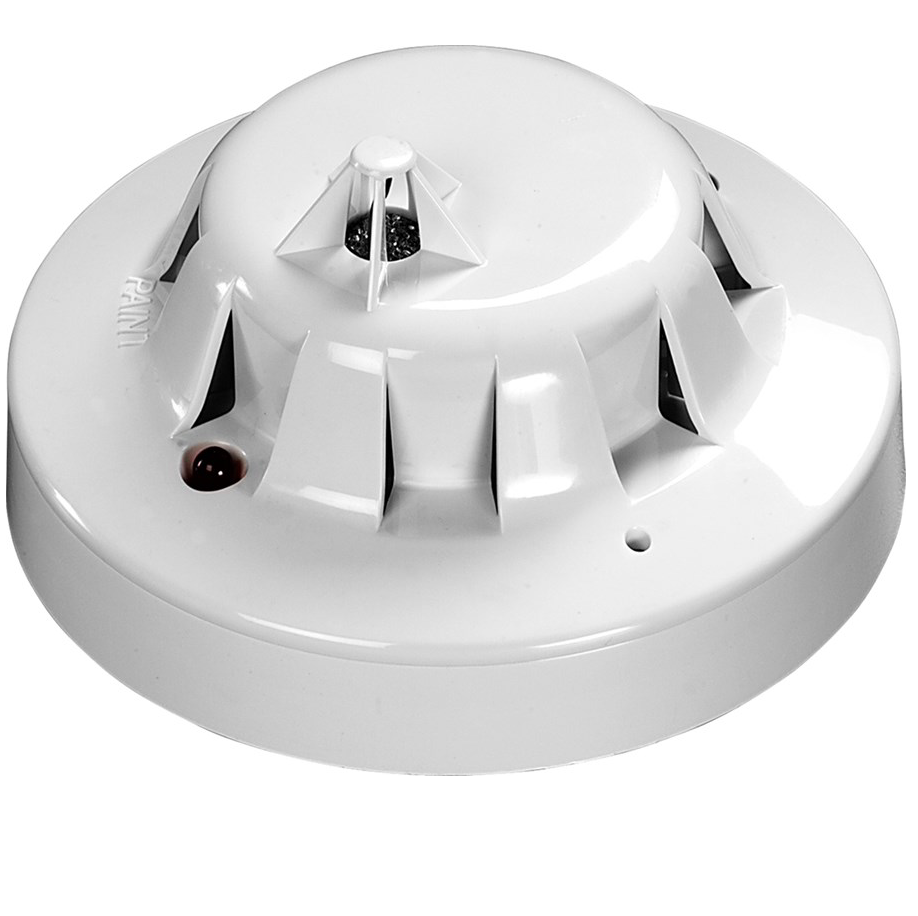This detector combines inputs from optical and heat sensors and processes them using a sophisticated algorithm.
When polled by the control panel it returns an analog count which is determined by combined responses from both optical and heat sensors. The multi-sensor detector is designed to be sensitive to a wide range of fires and may be used in place of an ionization detector in many instances.
The multi-sensor can be fitted in place of ionization detectors where these prove to be too sensitive and cause unwanted alarms.
Specifications are typical and given at 24V, 23°C and 50% relative humidity unless otherwise specified.
Detector Type: Detection Principle:
Chamber Configuration:
Supply Wiring: Terminal Functions:
Operating Voltage: Quiescent Current: Power-up Surge Current: Maximum Power-up Time: Operating Temperature: Alarm Indicator:
Alarm Current, LED illuminated: Remote Output Characteristics: Humidity:
Dimensions:
Weight: Materials:
F1000-886 Discovery Photoelectric/Heat Multi-sensor Detector
Smoke: Photoelectric detection of light scattered by smoke particles. Heat: Temperature sensitive resistance.
Horizontal optical bench housing an infra-red emitter and sensor arranged radially to detect forward scattered light.
Two wire supply
L1 and L2; supply in and out connections
+R; remote indicator positive connection (internal 2.2KΩ resistance to positive) -R; remote indicator negative connection (internal 2.2KΩ resistance to negative)
17 to 28 VDC
400μA
1mA
10 seconds
0oC to 49oC
2 colourless Light Emitting Diodes (LEDs) illuminating red in alarm 3.5mA
Connects to positive line through 4.5KΩ (5mA maximum) 0% to 95% relative humidity (no condensation)
4 in x 1.65 in (diameter x height)
3.0 oz.
Housing: White polycarbonate V-O rated to UL 94 Terminals: Stainless Steel, nickel plated


